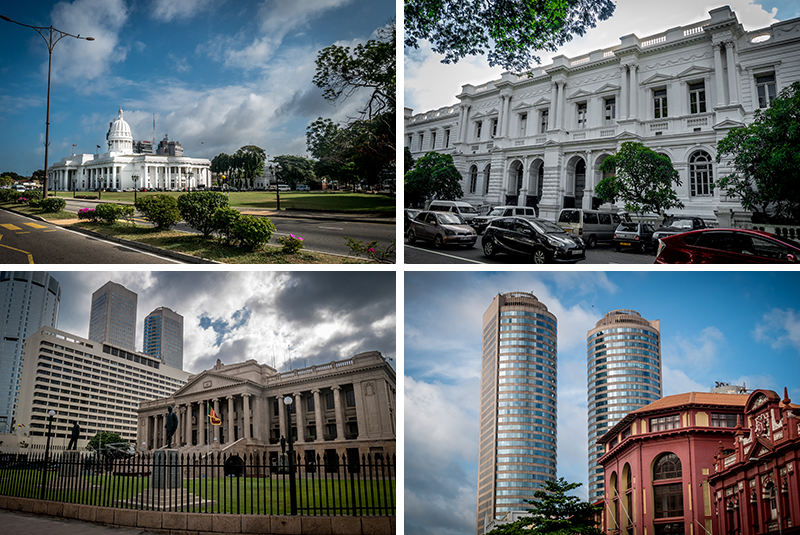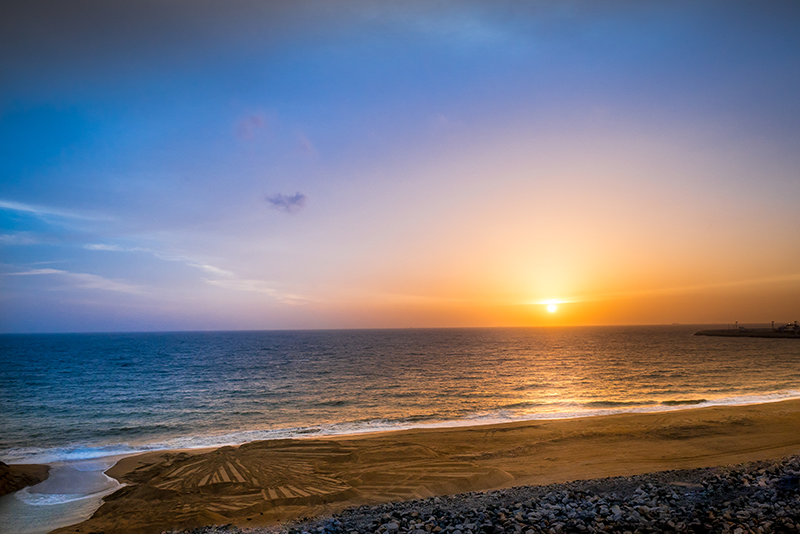Sponsored Listings:
I must admit that traveling to Colombo (let alone spending a few days here) has never really been on my agenda, and I’m sure I’m not alone in that. Colombo doesn’t quite have the reputation for being a popular tourist destination, but a short stay here made me realise it’s a pretty awesome city; a city in massive transformation with great potential and already so much to offer.
My journey of discovery started even before we hit ground at Bandaranaike International Airport. I’ve flown to and from chaotic and half functioning airports all over Asia in the past with non-existent or illogical signage, poor air conditioning and unhelpful ground staff, and I expected something similar in Sri Lanka. It was nothing like that. The airport is bigger and more developed than I expected; it is really well organised with clear signage and very helpful staff. Lush some may say.
Getting out of the airport and on the road was the moment I realised I had no idea to expect from my ten days in Sri Lanka. I’d been told that travelling by road is almost impossible with roads that are nearly non existent or in other ways in poor condition. What we were met with were new big shiny motorways fit for a twenty-first century business and tourism hub – roads that even a Scandinavian country could even dream of.
A city in transformation
Once you get into Colombo you soon realise it’s a city in transformation, with new developments and modern architecture popping up next to beautiful colonial buildings. Skyscrapers are slowly starting to dominate the skyline as Colombo undergoes a transformation similar to that which Singapore has gone through.
In certain respects Colombo reminds me of Singapore, but that’s the plan. Colombo’s geographical location between east and west and the Indian subcontinent makes it an ideal new business hub between Singapore and Dubai – two cities it is gearing up to compete with.

A prominent example of the massive expansion plans is a very Dubai-esque style project that involves extending the city on the water. 500 acres of land is being reclaimed to create what they refer to as a “new city”, with luxury hotels, entertainment, business centres and even its own Grand Prix track. It’s a huge investment that comes with mixed feelings, but overall it’s a testament to the vision and ambition of a new twenty-first century Colombo.
Despite so much development happening across Colombo, it somehow amalgamates really well with ancient historic sites and colonial architecture. From my years living in Singapore I have always been massively impressed by colonial buildings and Colombo hasn’t changed my views. I’m convinced that Colombo will be able to find the perfect blend of the old and the new. Everywhere you look you can see the cultural heritage of the Portuguese, the Dutch and the British – particularly their town planning and architecture. You can almost imagine yourself being being present in colonial times but yet being part of modern society, and if you visit the area around the harbour you can still almost feel the vibe of the trade and commerce that happened in the 1815-1848 colonial era. Beautiful!
Heritage

Likewise you will constantly be reminded of Colombo’s ancient history and cultural and religious heritage. 73% of Sri Lankans are considered to be Buddhists, which is evident by the many Buddha statues, one of which you can find in the glorious Viharamahadevi park.
The Buddhist heritage is on magnificent display throughout the park with an enormous Buddha statue and numerous symbolic water fountains. The park, which used to be called Victoria park after Queen Victoria, is a perfect example how ancient, colonial and modern life come together, showcasing religion and history alongside modern culture, sports, art and entertainment.
Facing the colonial town hall and the Cenotaph War Memorial, Viharamahadevi is the oldest and only large-scale public park in Colombo. It’s definitely worth a visit during your stay.
You might have mixed feelings about land reclamation and new developments in cities with so much heritage, but there is no doubt Colombo is steering towards a very exciting future.
Nightlife

You can often tell quite a lot about a city based on its nightlife and Colombo is no exception. It’s obvious the city is up and coming by the rise of nightclubs and the underground movement. Because of my travel schedule I didn’t have the chance to explore much of the nightlife, but from speaking to our Colombo Jeep Tour guide (who is also a local radio presenter) the city’s night scene is actually far more buzzing than you might expect.
Despite the fact that many niche clubs are still underground and secretly moving across venues, there’s still a fairly relaxed attitude towards clubbing with Colombo apparently having quite a vibrant nightlife.
When I asked specifically about gay life, as I understood it to be the underlying meaning of “niche clubs”, I was told it’s very hidden and a pretty sensitive subject for the locals. Being gay in Sri Lanka is illegal and it’s especially tough for locals who will need to be on guard in public. For tourists and foreigners the authorities don’t make much of a fuss of it, although it’s advised to keep things low key. I’m looking forward to coming back to Colombo and explore the local nightlife of bars, restaurants and clubs.
With only a few days in Colombo I can only just scratch the surface of what Colombo has to offer. It’s a place with so much to explore and it would be a shame if tourists decide to skip Colombo without spending time here. I will be back!
The post Don’t Skip Colombo, it’s Becoming Cool appeared first on Pommie Travels.
Source: pommietravels.com










